Chrysanthemums, commonly known as ‘mums’, are a popular and vibrant addition to any garden. With their spectacular bursts of color and variety, mums have become synonymous with fall, adding life and vibrancy to the landscape as other plants begin to fade.
Beyond their aesthetic appeal, these hardy perennials offer a range of benefits and come in a plethora of varieties to suit any gardener’s taste.
Whether you’re an experienced gardener or just starting out, growing and caring for mums can be a delightful and rewarding endeavor.
Benefits of Growing Mums
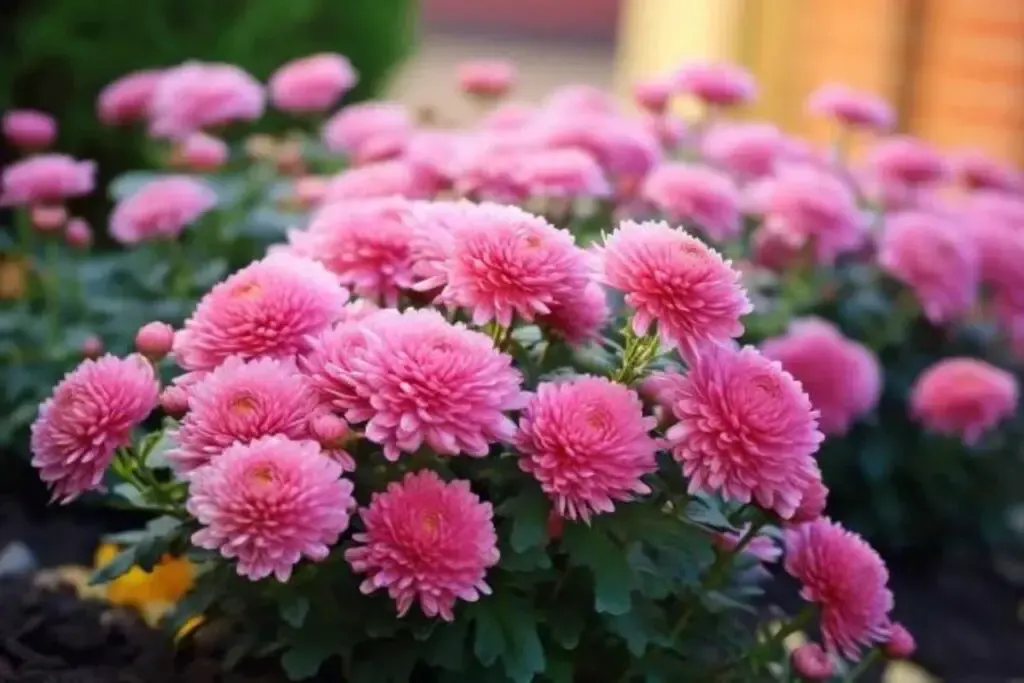
1. Extended Color in the Garden
Mums bloom in late summer and fall, a time when many other flowers are winding down. They fill gardens with color well into the cooler months, extending the life and beauty of your outdoor spaces.
2. Versatility
Mums are incredibly versatile. They can be grown in garden beds, containers, and even hanging baskets, making them suitable for various gardening styles and spaces.
3. Attract Pollinators
These flowers are excellent at attracting butterflies and bees to your garden, supporting local ecosystems, and ensuring pollination of your other garden plants.
My Favorite Mum Varieties
The world of mums is diverse and colorful, with each variety offering something special. From small, daisy-like flowers to large, dramatic blooms, there’s a mum for every garden.
Here are three varieties that I find particularly striking:
1. Clara Curtis
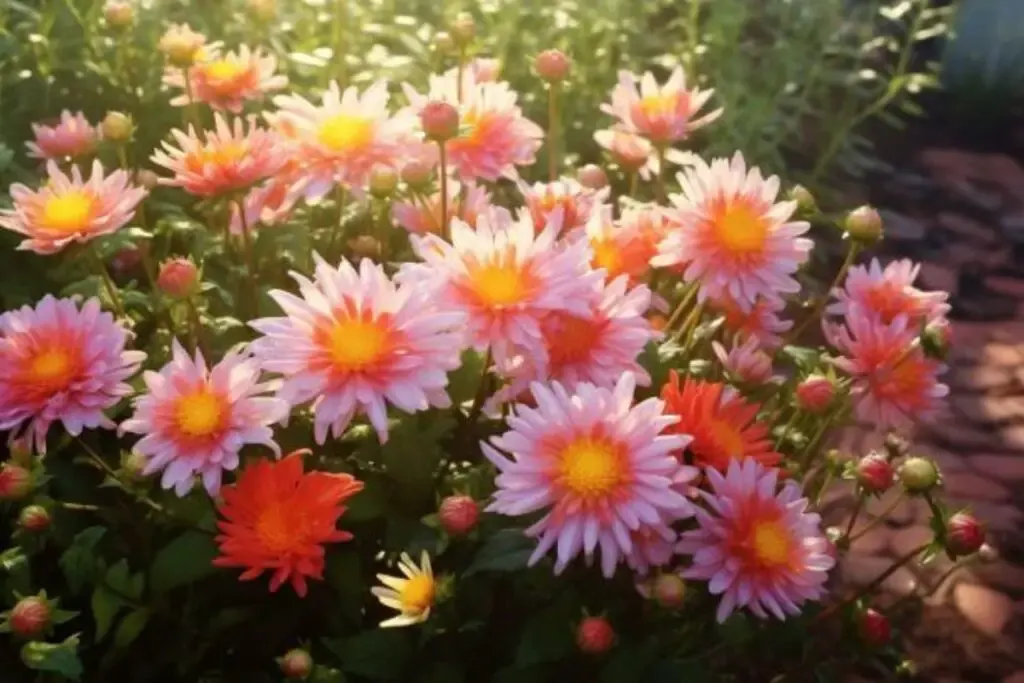
Also known as the ‘Country Girl’ mum, this variety boasts daisy-like, pink flowers with a yellow center. It’s a hardy and reliable perennial, returning year after year with minimal fuss.
2. Matchsticks
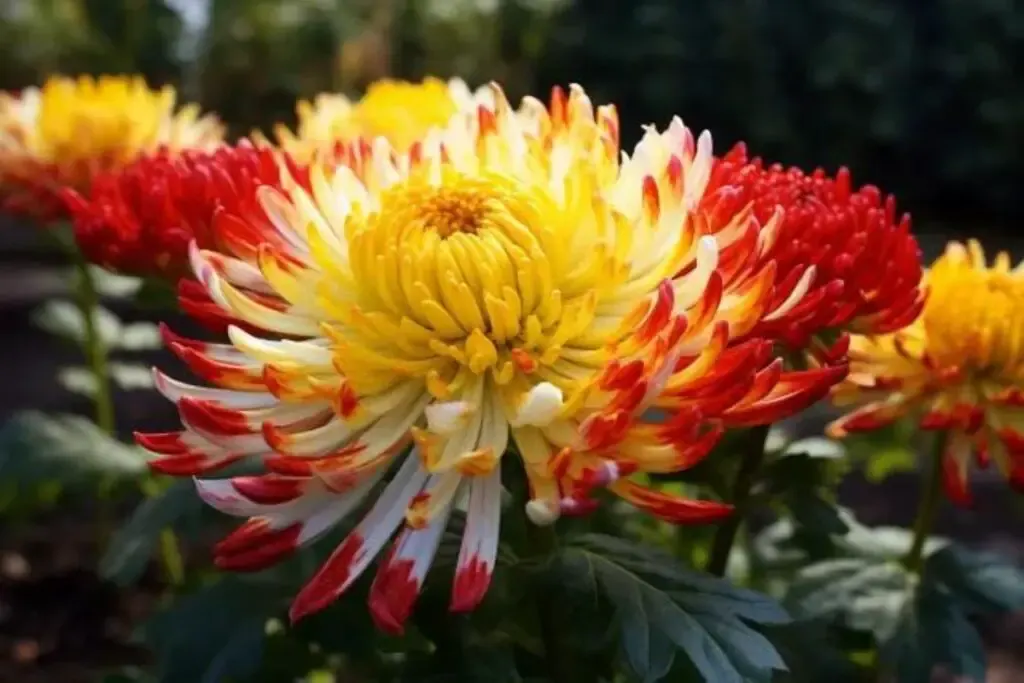
This variety is known for its unique appearance, with red and yellow quilled petals that resemble matchsticks. It’s a real showstopper and adds an interesting texture to the garden.
3. Belgian Mums
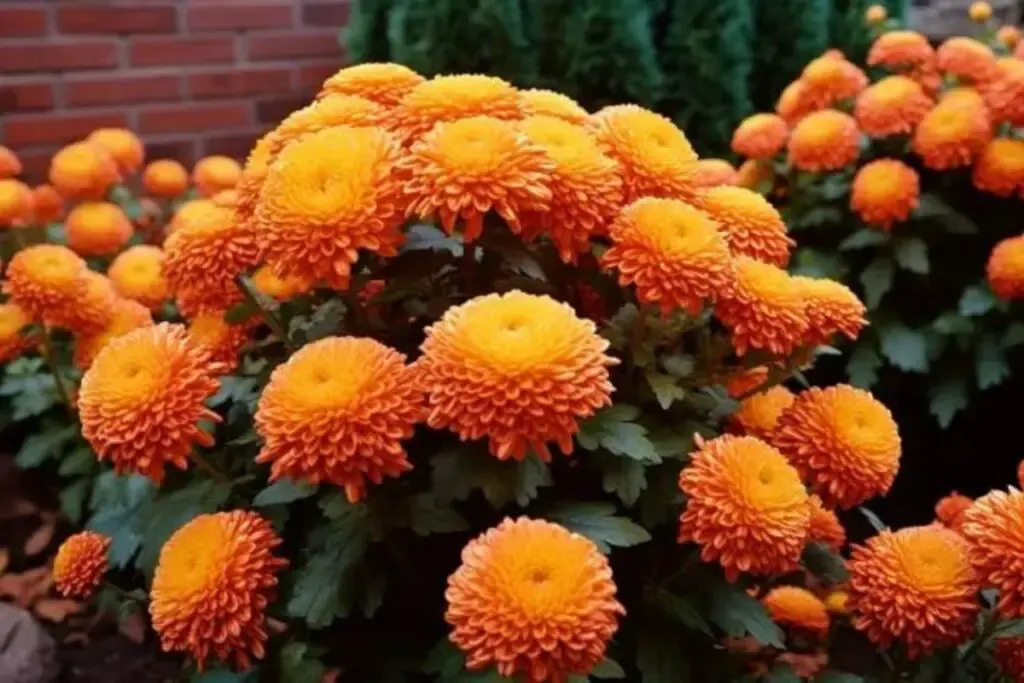
Known for their incredible bloom count, Belgian mums form dense, globe-like plants covered in flowers. They come in a wide range of colors and are perfect for creating a bold impact.
Mum Care
Caring for mums is a gratifying process that brings a burst of autumnal color to your garden. These hardy plants don’t ask for much, but a little attention and care can yield stunning results.
Whether you are nurturing your mums for a season or growing them as perennials, understanding their basic needs is key to a thriving display.
Planting

The best time to plant mums is in the spring, giving them ample time to establish roots before the cold weather sets in. Choose a spot with ample sunlight and good drainage.
Space the plants about 18 to 24 inches apart to allow for growth and air circulation. Plant them at the same depth they were in the pot to avoid burying the stems, which can lead to rot.
Light
Mums thrive in full sunlight. Aim for a minimum of 6 hours of direct sunlight a day. Adequate light is crucial for the development of strong, healthy blooms.
If your mums are not getting enough light, they may produce fewer flowers and become leggy.
Soil
These flowers prefer well-drained soil. If your garden soil is heavy, consider amending it with compost or peat moss to improve drainage.
Mums do well in a slightly acidic to neutral pH range (6.0 to 7.0). Good soil preparation is key to healthy root development.
Water
Mums require consistent moisture, especially when they are blooming. Water them deeply at the base, avoiding wetting the foliage, which can lead to disease.
Allow the soil to dry slightly between waterings, but don’t let the plants wilt. Overwatering or poor drainage can lead to root rot.
Temperature and Humidity
Mums are quite adaptable to different temperature ranges, but they perform best in moderate conditions. They don’t require high humidity and can handle the typical humidity levels found in most gardens. Protecting them from frost is essential for their survival through the winter.
Fertilizer
Fertilize your mums with a balanced, all-purpose fertilizer in the spring as new growth appears. Avoid fertilizing late in the season, as this can promote tender growth that’s susceptible to winter damage. Over-fertilizing can lead to lush foliage at the expense of blooms.
Pruning
Pruning mums are essential for maintaining their shape, encouraging bushier growth, and promoting more abundant blooms. It’s a simple yet effective way to enhance the overall health and appearance of your plants.
Here are three key pruning practices:
- Pinching Back: In early summer, pinch back the new growth to encourage bushier plants and more flowers. Simply remove the top few inches of each stem using your fingers or pruning shears.
- Deadheading: Regularly remove spent blooms to encourage the plant to produce more flowers. This keeps your mums looking fresh and vibrant throughout the blooming season.
- Post-Bloom Pruning: After the first hard frost, you can cut back the foliage to a few inches above the ground. This helps to tidy up the plant and prepare it for winter.
Propagating
Mums can be easily propagated to create new plants. The division is the most common method:
- Division: In spring, carefully dig up your mums and divide the root ball into smaller sections. Each section should have several shoots and a healthy root system.
- Replant: Plant the divisions in a prepared bed or container, ensuring they have plenty of space to grow.
This method not only helps in propagating your mums but also rejuvenates older plants that might have become woody or less vigorous.
How to Grow Mums From Seed
Growing mums from seed can be a rewarding experience, though it requires patience:
- Sow Indoors: Start seeds indoors about 8 to 10 weeks before the last frost date. Use a well-draining seed starting mix and keep the soil moist.
- Transplant: Once the seedlings are large enough to handle and the danger of frost has passed, transplant them into your garden or larger pots.
Keep in mind that mums grown from seed may not always resemble the parent plant, due to cross-pollination.
Growing in Pots
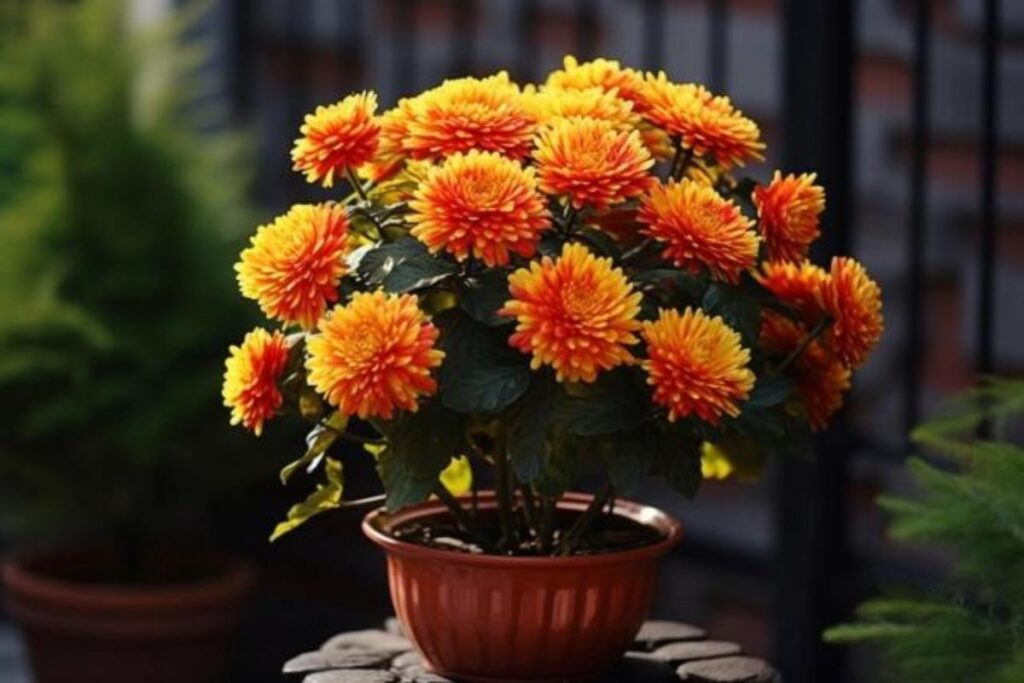
Mums are excellent for container gardening, bringing fall color to patios, balconies, and indoor spaces:
- Choose the Right Container: Ensure the pot has adequate drainage holes. A pot that’s too large can cause the soil to stay wet and lead to root rot.
- Use Good Potting Mix: A well-draining potting mix is essential. You can add perlite or vermiculite to improve drainage.
- Regular Care: Container mums need more frequent watering than those in the ground. Monitor the soil moisture closely and water when the top inch feels dry.
Growing mums in pots allows for flexibility in garden design and the ability to bring color to various parts of your living space.
Overwintering
Overwintering mums is crucial, especially in regions where temperatures drop significantly. These plants can be quite hardy, but they do need some help to survive the winter. Here’s how to give your mums the best chance at coming back strong in the spring:
- Mulching: After the first hard frost, cover your mums with a thick layer of mulch. This protects the roots from extreme temperature fluctuations.
- Avoid Pruning Too Late: Refrain from cutting back mums too late in the fall. The foliage can provide extra protection during the winter.
- Container Mums: If your mums are in pots, consider moving them to an unheated garage or shed to provide some protection from the cold.
Transplanting
Transplanting mums can help rejuvenate an older plant or manage its size and shape. The best time to transplant is in the spring when the risk of frost has passed, and the plant starts showing new growth:
- Prepare the New Location: Choose a spot with good drainage and full sun.
- Dig Up Carefully: Gently dig around the mum, being careful not to damage the root system.
- Replant Immediately: Plant the mum in its new location at the same depth it was previously and water thoroughly.
Common Pests & Diseases
Mums, like all plants, can be susceptible to certain pests and diseases. Here are a few to watch out for:
- Aphids: These small pests can be found on the undersides of leaves, sucking plant sap. They can be managed with insecticidal soap or neem oil.
- Spider Mites: These tiny pests can cause mums’ leaves to yellow and drop. Increasing humidity and using miticides can help control them.
- Powdery Mildew: A common fungal disease that appears as white, powdery spots on leaves. Ensure good air circulation and consider using a fungicide if necessary.
- Botrytis Blight: This fungus causes brown spots and decay on leaves and flowers. Remove affected parts and avoid overhead watering to prevent its spread.
With their wide range of varieties, vibrant colors, and the ability to bloom in the cooler autumn months, mums offer a unique opportunity to extend the beauty and enjoyment of your garden.
Whether you’re an experienced gardener or just starting out, these hardy flowers are sure to bring satisfaction and a burst of color to your outdoor space.
Happy gardening, and enjoy the delightful display that mums bring to your garden each year!

